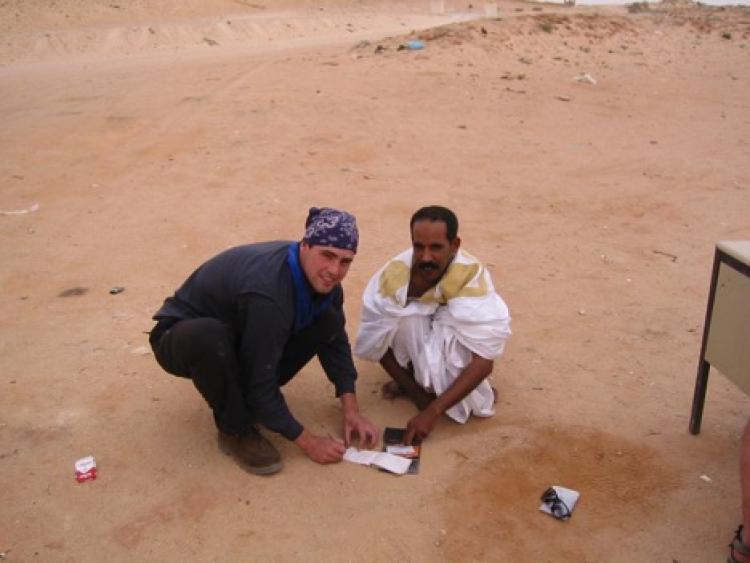Statistics lab helps developing world do high-impact research
Applied mathematics initiative wins $1 million grant from U.S. Agency for International Development
Solving big problems sometimes involves crunching big data, and a University of Colorado Boulder initiative has won a significant grant to help the developing world do just that.
The University of Colorado Boulder’s Laboratory for Interdisciplinary Statistical Analysis (LISA) 2020 project, which aims to build 20 statistical analysis laboratories in low and lower-middle income countries by 2020, has received a $1 million grant from the U.S. Agency for International Development (USAID).

In this 2002 photo, Eric Vance, now a professor of applied mathematics at CU Boulder, works with an unidentified African scientist. Photo courtesy of Eric Vance. At the top of the page is an image of a tea plantation in Tanzania. (iStockphoto)
Directed by Professor Eric Vance of applied mathematics, LISA is a statistical analysis lab at CU Boulder that trains students to collaborate across disciplines to leverage statistics for high-impact research that betters the world. At CU Boulder, their research ranges from interpreting soil classifications to improve a farmer’s crop yield to better understanding the African diaspora by modeling the fall of a slave-trade empire.
LISA 2020 builds on this mission and aims to train the next generation of statisticians and data scientists at local universities in low- and lower-middle-income countries, creating interdisciplinary collaborators to solve developmental challenges.
LISA 2020, Vance says, “is an example of how CU Boulder can experiment locally and generate innovations to benefit humanity that can be adopted worldwide,” collaborating with those far outside of Colorado or the United States.
Currently, LISA 2020 is a network of 11 collaborating labs in Nigeria, Ethiopia, Tanzania, Zimbabwe and Brazil, all branching from LISA’s roots at CU Boulder.
Two more laboratories are being established in India and Ghana because of this USAID grant. Efforts to establish more labs in Pakistan, India and Zimbabwe are also underway.
With the LISA 2020 initiative, Vance hopes universities in the countries where new labs are being built will be able to “jump-start their own research endeavors” with access to statistics and data-science expertise.
Though data analysis is often employed in the private sector, it is also helpful in establishing data-driven policy interventions and interpreting research for scientists, engineers, health professionals and policymakers in nonprofit organizations. Coming up with local solutions to local problems is at the core of LISA 2020’s mission.
Vance notes that LISA 2020 helps his graduate students with the opportunity to travel internationally while studying statistics.
There are literally PhD scientists wandering the Saharan Desert, looking for statisticians to collaborate with.”
Vance conceived of the initiative while traveling the globe before entering graduate school. He was in the desert at the border of the Western Sahara territory and Mauritania, and he met a PhD biologist studying the Saharan desert fox.
While waiting for their paperwork to be processed, the biologist realized Vance was a statistician and was overwhelmed with excitement. “He started describing his issues, wondering how he could best analyze his data…and so we started talking a little bit,” Vance recalls. But before they could adequately analyze data about the desert fox, Vance had to leave.
Vance observes: “There are literally PhD scientists wandering the Saharan Desert, looking for statisticians to collaborate with.” The LISA 2020 project aims to pave those avenues of collaboration.
“Statistics, and the compiling of numbers of generations of data, can objectively tell us about what the world is like,” he says, adding: “And then, through the scientific process and the predictive capabilities of statistics, we can also evaluate options and paths for making the world into what we want it to become.”
LISA 2020 is seeking funds to build the remaining laboratories and meet the initiative’s target of 20 labs by 2020.

